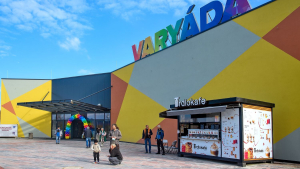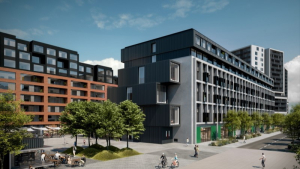
Despite the COVID-19 pandemic and the introduction of hybrid working, the office market in Sofia has been developing extensively in recent years. Demand continues to increase, mainly due to IT and outsourcing sector representatives, and supply still cannot fully meet it. However, property developers in regional markets are still exercising caution when initiating new investments. These are some of the main conclusions of Colliers' latest report on offices in regional cities in Bulgaria.
According to the company's latest data, as of the first quarter of 2023, the supply of class A and B offices in Sofia amounts to 2,432,900 sqm with an additional 283,500 sqm under construction, the net utilization is 26,700 sqm, the vacant offices class A and B are 11%, and the rental levels are €14 per sqm/month (class A) and €10 per sqm/month (class B).
The market in Plovdiv is driven by the IT sector
The supply of office space class A and B in Plovdiv reached 270 700 sq.m. This represents an increase of about 5.9% compared to the previous year. A total of 60,300 sqm are under active construction, most of which are Class A. Vacancies show a downward trend from the highest value reached in 2020 when the COVID-19 pandemic began. Currently, their share is 11.4%. Class A offices account for the bulk of the total with a share of 56%
Most of the areas are located in suburban areas (56%), a quarter is in a wide centre and only 19% - are in a centre. Demand in the city last year was entirely due to the IT and outsourcing industry. Rents remain stable - about €9 per sqm/month for class A areas and about €5 per sqm/month for class B.
In Varna, half is absorbed by retailers
With only about 9,400 sqm of office space under active construction in Varna, half of the net take–up in 2022 came from retailers. They are followed by logistics companies occupying 35% of the space and IT companies – 15%.
Supply of contemporary office space increased by 4.4% on an annual basis and exceeded 280,900 sqm. The vacancy rate is at a level of 10.6%, which represents a very slight decrease from the previous period. A total of 54% of the office inventory is in Class A buildings. Over half of the total supply is in Suburban areas (55%), while 23% is in the Broad centre and the remaining 22% is in CBD. Average rents remain unchanged – at a level of €8/sqm/month for Class A office space and around €5 /sqm/month for Class B
The supply of modern office space in Burgas is lagging behind Plovdiv and Varna
It increased by about one-third (concentrated in a single project) and is now almost 91,000 sqm. The vacancy rate has been traditionally around 5–6% in Burgas. However, with the completion of one major project the space available for occupation increased significantly. The vacancy rate in Burgas is currently 20.6%. Class A office space has a share of 63% of the total inventory. Nearly half of the modern office stock (48%) is situated in Broad Center. 20% is in the Central business district, while 32% is in Suburban areas. 100% of the net take–up during the past year came from IT and outsourcing companies. Average rental levels for Class A office space remain unchanged – at €7.5/sqm/month and for Class B – at €5/sqm/month. There are currently about 7,700 sqm of office space under active construction in Burgas
Ruse is relying exclusively on demand from IT and outsourcing companies
The supply of office space in Ruse is 79,200 sqm. Inventory is comprised of 51% Class A office space and 49% Class B. Only 12% are located in CBD and 13% are in Broad Center. Average rental rates for Class A office space are around €7/sqm/month. The active pipeline of projects comprises around 5,500 sqm under construction in the city.
No major office projects under construction es in Stara Zagora and Blagoevgrad
The supply of office space in Stara Zagora amounts to 42,200 sqm. Inventory is almost evenly divided between CBD (48%) and Suburban areas (52%). In Blagoevgrad, the total supply of office space is about 16,500 sqm. The office stock is located mostly in Broad Center with 42%, followed by CBD (30%) and Suburban area (28%)
Rental rates in regional cities are expected to remain stable with downward pressure on outdated stock. The entry of new and expansion of existing international companies in sourcing and technology industries will be influenced by the availability of a talented workforce as well as hybrid work models. Therefore, regional cities offering both traditional and flexible office space options are expected to be more attractive



